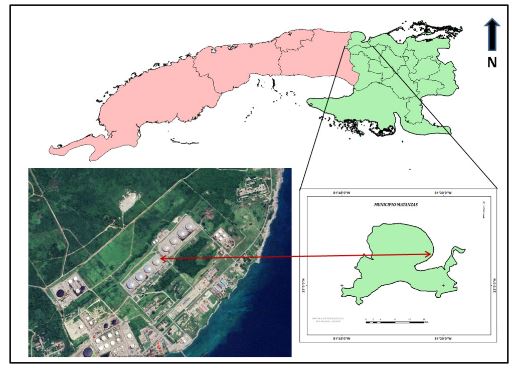Trajectory forecast of the pollutants plume generated by the fire at the Matanzas Supertanker Base
Main Article Content
Abstract
The Hybrid Single Particle Lagrangian Integrated Trajectory (HYSPLIT) model was used to determine the trajectory of the pollutants from the accident at the supertanker base in the city of Matanzas. This model builds the trajectories that the particles follow depending on the meteorology, the height that you want to simulate that trajectory and the initial coordinates of it. The modeling was calculated for the first six days that pollutants were emitted into the atmosphere as a result of this accident, although these pollutants suffer different transformations as they move through the atmosphere, know the place and the movement of this air mass it´s a very important tool for decision makers in cases where is required an instantaneous action. The input meteorological data selected was from the GFS because it has shown the best outputs respect to the other input meteorological options. The height chosen for the modeling it was selected according to the visual observations of one of the authors and the director of the Bainoa meteorological station, who compared the height of the plume with the base of the medium and low clouds.
Downloads
Article Details

This work is licensed under a Creative Commons Attribution-NonCommercial 4.0 International License.
Those authors who have publications with this journal accept the following terms of the License Attribution-NonCommercial 4.0 International (CC BY-NC 4.0):
You are free to:
- Share — copy and redistribute the material in any medium or format
- Adapt — remix, transform, and build upon the material
The licensor cannot revoke these freedoms as long as you follow the license terms.
Under the following terms:
- Attribution — You must give appropriate credit, provide a link to the license, and indicate if changes were made. You may do so in any reasonable manner, but not in any way that suggests the licensor endorses you or your use.
- NonCommercial — You may not use the material for commercial purposes.
- No additional restrictions — You may not apply legal terms or technological measures that legally restrict others from doing anything the license permits.
The journal is not responsible for the opinions and concepts expressed in the works, they are the sole responsibility of the authors. The Editor, with the assistance of the Editorial Committee, reserves the right to suggest or request advisable or necessary modifications. They are accepted to publish original scientific papers, research results of interest that have not been published or sent to another journal for the same purpose.
The mention of trademarks of equipment, instruments or specific materials is for identification purposes, and there is no promotional commitment in relation to them, neither by the authors nor by the publisher.
References
Draxler, R., & ARL, N. T. M. E. (2004). Seminario de capacitación para el uso del modelo HYSPLIT en PC. Hybrid Single-Particle Lagrangian Integrated Trajectory Model. National Oceanic and Atmospheric Administration.
Martínez, I. (2014). Curso sobre observación y predicción de la calidad del aire’, AEMET, España. https://repositorio.aemet.es/bitstream/20.500.11765/11186/1/Boletin_julio_2014.pdf
Quirantes Calvo, J. A. (2017). Nuevo Atlas Internacional de Nubes.
W.M.O. (1996). Report of the Meeting of Experts on Atmospheric Urban Pollution and the Role of National Meteorological Services’. Geneva. 7-11 October. GAW No. 115. WMO-TD No. 801. 26 pp.

